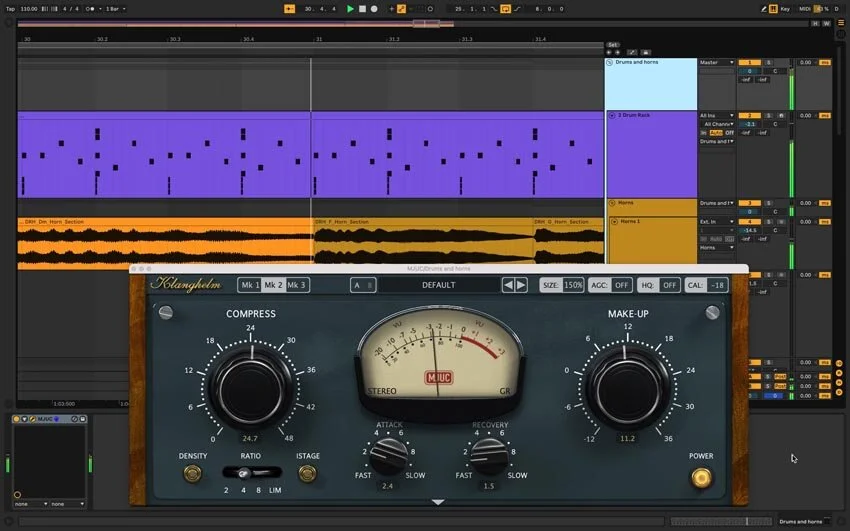· Von Rishi Pothuganti
6 Inventive Compression Techniques To Elevate Your Music Production
 Compression is a staple in the toolkit of modern music production, essential for not just managing levels but also for adding a unique flair to your tracks. If you're only using it to even out volumes, you're overlooking several inventive strategies that could significantly enhance your mixes. Let's dive into six inventive compression techniques that can transform your music production.
Compression is a staple in the toolkit of modern music production, essential for not just managing levels but also for adding a unique flair to your tracks. If you're only using it to even out volumes, you're overlooking several inventive strategies that could significantly enhance your mixes. Let's dive into six inventive compression techniques that can transform your music production.
1. Push Compression to Its Limits
Typically, compression is used subtly to control peaks and add punch while staying under the radar. However, when aiming for a creative edge, don't hesitate to push your compressor to its extremes. This approach can emulate the tight dynamic range of vintage records, beef up weak drum loops, or give an electric bass line a gritty edge. Experiment with maxing out various compressor settings—like input gain, threshold, ratio, attack, and release times—and listen as these adjustments introduce unique sonic artifacts and textures, adding a transformative character to your sound.
2. Explore Unconventional Group Compression
Compression isn't just about treating individual tracks; it's also a powerful tool for gluing together different elements of your mix. Beyond the usual drum or vocal busses, have you considered more unconventional groupings? Try compressing your drums and bass together, or maybe pair a synth pad with the bass. Mixing unexpected elements with compression can inject new life into your track's rhythm and cohesion.
3. Embrace Automation for Dynamic Control
While a compressor is essentially an automatic volume controller, manually automating its parameters can introduce dynamic changes that evolve with your arrangement. For instance, you can increase the intensity of your vocals in the chorus by adjusting the threshold or ratio, or alter the attack time on your snare for a varied texture. Automating the mix between compressed and uncompressed signals for different song parts can also create a rich, dynamic landscape.
4. Compress Reverbs and Delays for Spatial Magic
Reverb and delay effects, with their inherently dynamic nature, are prime candidates for compression. Placing a compressor after a reverb can dramatically change the perceived space and depth of your mix, making it feel larger and more immersive without elongating the reverb tail. Applying compression to delays can maintain the volume of feedback loops, adding a compelling texture to your sound.
5. Choose Characterful Compression for Musicality
Some compressors are designed to be pushed hard and are perfect for when you're looking to add a bit of edge to your sound. These "character" compressors, like the iconic 1176 or the versatile Empirical Labs Distressor, prioritize musical tone and texture over sheer transparency. They're excellent for achieving bold, creative effects that can make your tracks stand out.
6. Get Creative with Sidechain Compression
Sidechain compression is not just a tool for achieving that classic pumping effect in dance music; it's a versatile technique that can add rhythm and interest to any element of your mix. Instead of the typical kick drum triggering a compressor on a bass line, why not experiment with different triggers, such as a snare drum or an unrelated percussion loop? The possibilities are endless and can lead to innovative sonic landscapes.
By incorporating these inventive compression techniques into your music production workflow, you can unlock new creative potentials and bring a fresh perspective to your mixes. Remember, the key to mastering compression is experimentation and understanding how it can serve both as a subtle enhancer and a bold effect in your musical creations.
Don't forget to check out Tunebat Marketplace for all your music production needs. Happy remixing!

